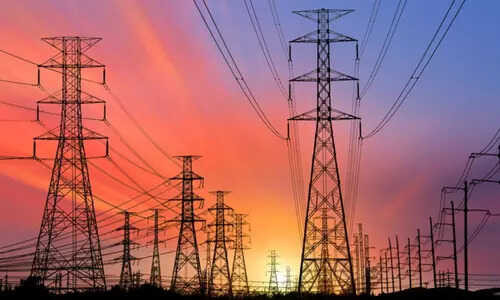The National Stock Exchange (NSE) is poised to introduce electricity futures contracts within weeks, having secured regulatory approval. This initiative aims to provide power sector participants with a hedging mechanism against price volatility. The contracts, each representing 50 MWh, will be priced using a weighted average of spot prices from multiple platforms, fostering a more efficient electricity derivatives market.
Powering Up: India’s Energy Sector Braces for Electricity Futures Trading
The hum of India’s power grids is about to get a whole lot more interesting. Soon, the National Stock Exchange (NSE) will be throwing open the doors to electricity futures trading, a move poised to inject dynamism and transparency into the nation’s energy market. Think of it as a real-time weather forecast, but for electricity prices, allowing stakeholders to plan ahead and mitigate risk.
For years, the Indian power sector has wrestled with volatility. Fluctuating fuel costs, unpredictable demand spikes, and the ever-present specter of transmission bottlenecks have made long-term planning a tricky business. This is where electricity futures enter the picture. By allowing market participants to lock in prices for future delivery of electricity, these contracts offer a crucial tool for hedging against price swings.
Imagine a large industrial consumer, reliant on a steady supply of power to keep its operations humming. With electricity futures, this company can secure a predetermined price for its electricity needs months in advance, shielding it from unexpected surges in the spot market. Similarly, power generating companies can use futures to guarantee a certain revenue stream for their output, providing greater financial stability and incentivizing investment in new capacity.
The NSE’s decision to launch electricity futures is a bold step towards modernizing India’s energy infrastructure. It aligns with global best practices, mirroring established energy markets in countries like the United States and Europe. The introduction of futures trading is expected to foster greater competition and efficiency within the sector, ultimately benefiting both producers and consumers.
But what makes this launch even more appealing? Recognizing the need to encourage early adoption, the NSE is waiving transaction fees for the first six months. This strategic move lowers the barrier to entry, inviting a wider range of participants to explore the potential of electricity futures. It’s akin to offering a free trial – a chance to test the waters and experience the benefits firsthand before committing long-term.

Understanding Electricity Futures: A Simplified View
At its core, an electricity future is a standardized contract obligating the buyer to receive, and the seller to deliver, a specified amount of electricity at a predetermined price on a future date. These contracts are traded on exchanges like the NSE, offering a centralized and transparent platform for price discovery. The price of a futures contract reflects the market’s collective expectation of future electricity prices, taking into account factors like weather patterns, fuel costs, and demand forecasts.
Unlike buying and selling electricity for immediate use (the spot market), futures contracts are settled financially. This means that at the contract’s expiry, the difference between the agreed-upon futures price and the actual spot price is settled in cash. This financial settlement mechanism simplifies trading and reduces the logistical complexities associated with physical delivery of electricity.
Who Benefits from Electricity Futures?
The potential beneficiaries of electricity futures are diverse, spanning the entire energy value chain:
* Power Generating Companies: Can hedge against falling electricity prices and secure stable revenues.
* Distribution Companies: Can manage price volatility and ensure a reliable supply of power to their customers.
* Large Industrial Consumers: Can lock in electricity prices and protect their bottom lines from unexpected price increases.
* Financial Institutions: Can participate in the market as traders, providing liquidity and facilitating price discovery.
Looking Ahead: The Future of Energy Trading in India
The NSE’s foray into electricity futures trading marks a significant milestone in the evolution of India’s energy market. As the market matures, we can anticipate the introduction of more sophisticated trading products and strategies. This could include options on electricity futures, allowing market participants to further refine their risk management approaches.
Moreover, the success of electricity futures could pave the way for the development of futures contracts for other energy commodities, such as natural gas and renewable energy certificates. This would create a more integrated and comprehensive energy trading ecosystem, fostering greater efficiency and transparency across the board. You can explore more about [related energy initiatives] on our website.
The launch of electricity futures is not just about trading contracts; it’s about building a more resilient, efficient, and transparent energy future for India. It empowers stakeholders with the tools they need to navigate the complexities of the power market and ensures a more secure and sustainable energy supply for the nation. By embracing innovation and adopting global best practices, India is steadily transforming its energy landscape, one futures contract at a time.







